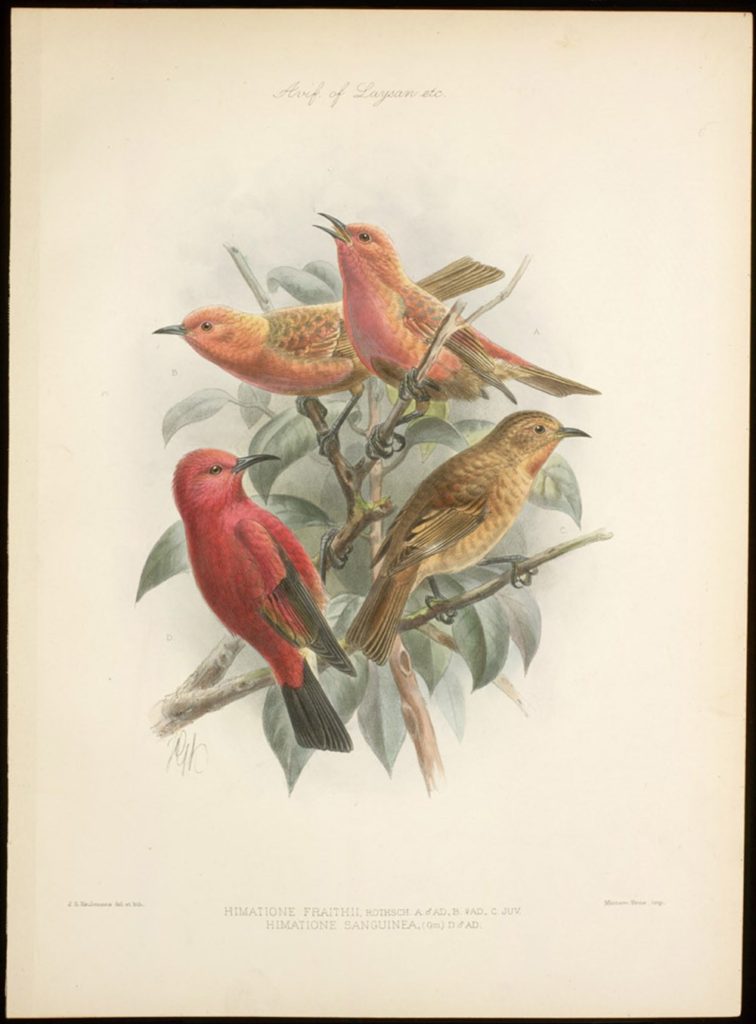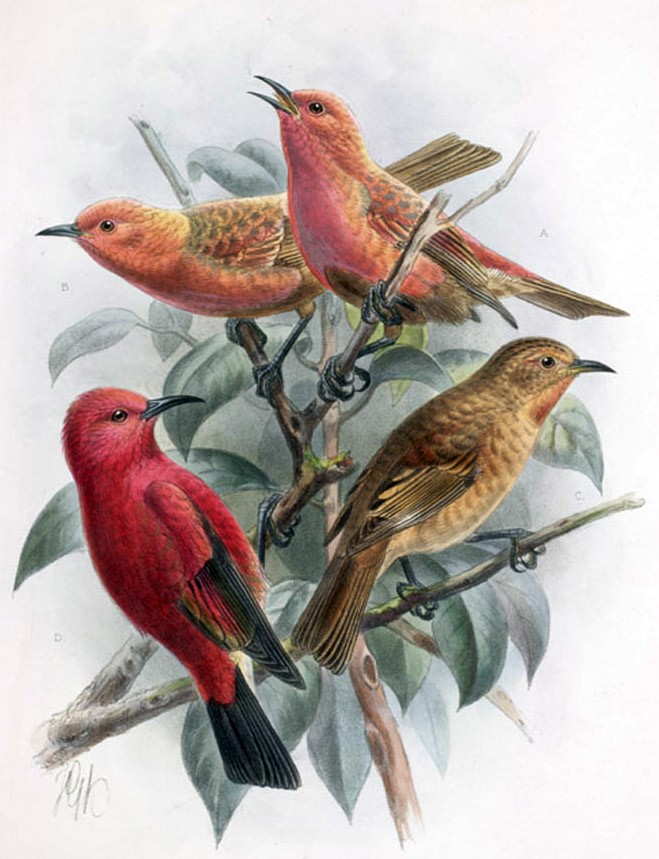Birdfinding.info ⇒ The Laysan Honeycreeper remained common on Laysan Island into the 1910s: the population was estimated at 1,000 in 1915. But European Hare introduced in 1903 eventually denuded the one-square-mile island of most of its vegetation, leaving little habitat for landbirds. By April 1923, three honeycreepers remained, and a major storm from April 18 to 20 delivered the coup de grace.
Laysan Honeycreeper †
Himatione fraithii
Extinct. Formerly endemic to Laysan Island in the Northwest Chain of Hawaii.
Identification
A mid-sized honeycreeper with a thin, decurved, black bill, and mostly red plumage, mottled with sooty blackish-gray. The wings, tail, lower belly, and undertail coverts were sooty.

Laysan Honeycreeper. © David Eickhoff

Laysan Honeycreeper, two adults above, with an immature in the lower right and an Apapane in the lower left. John Gerrard Keulemans, 1890
Notes
Monotypic species. Formerly considered a subspecies of Apapane (Hemignathus sanguinea).
IUCN Red List Status: Extinct.
References
BirdLife International. 2017. Himatione fraithii (amended version of 2016 assessment). The IUCN Red List of Threatened Species 2017: e.T103829706A119553201. https://dx.doi.org/10.2305/IUCN.UK.2017-3.RLTS.T103829706A119553201.en. (Accessed May 20, 2020.)
Hume, J.P. 2017. Extinct Birds (Second Edition). Bloomsbury Publishing PLC, London.
Pratt, H.D. 2005. The Hawaiian Honeycreepers: Drepanidinae. Oxford University Press.
Pyle, R.L., and P. Pyle. 2017. The Birds of the Hawaiian Islands: Occurrence, History, Distribution, and Status. Version 2 (January 1, 2017). http://hbs.bishopmuseum.org/birds/rlp-monograph/. B.P. Bishop Museum, Honolulu, Hawaii.
